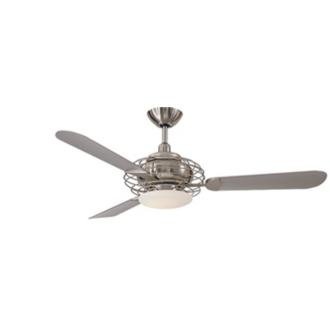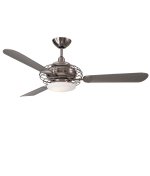The Demoiselle, a small, frail monoplane seemingly incapable of supporting a single pilot, not only reflects the equally short man who designed it, but the long lineage of lighter-than-air craft which had preceded it. That designer, five-foot, four-inch, 110-pound Alberto Santos-Dumont, who had hailed from Brazil, had spent most of his life in France, site of the world's first successful aerial balloon ascent by the Montgolfier Brothers in 1783 and an event which may have subconsciously sparked his own related experimentation.
Unlike fixed- or rotary-wing aircraft, which employ the science of aerodynamics for lift, these balloons attain lift by means of the buoyancy principle.
Air is compressible-that is, its own weight compresses it. The lower its location in the atmosphere, the more air-and therefore weight-is above it, rendering it densest at or near the ground. Conversely, as it rises, it becomes thinner.
Hot air balloons utilize these varying conditions to attain lift. Heated air, or lighter-than-air gas, within a balloon's envelope, causes the balloon itself to rise, because its internal air is less dense than the surrounding air. When it reaches the altitude where the density of its internal air equals that of the surrounding air, it ceases to rise and attains a state of internal and external equilibrium-that is, its internal gas density equals the external gas density.
At this point, the downward pressure exerted on the balloon equals the upward pressure on the balloon. Balloons are designated "aerostats" because their lift is attained in a static air mass-that is, an air mass which does not move. An aerostat moves vertically, but relies on existing wind direction and speed for its horizontal motion. As a result, it cannot be relied on for specific-direction transportation.
Aerostats with controlled movement employ one or more propellers for velocity and direction, and are designated "airships," but these propellers do not provide or augment lift.
Santos-Dumont had, even at an early age, resolved to exert a profound impact on people with his life, but had yet to determine the means. Nevertheless, a fascination with flight, in general, and balloons, in particular, only continued to increase, causing him to focus on their steering deficiencies and leading him to believe that their aimless, wind-determined direction could be substituted with pilot control.
It was only after his own first aerial ascent in a 40-foot-diameter balloon in the fall of 1897 that he concluded that aeronautics had been his life's calling.
Seeking to tame the uncontrollability factor, he designed an airship designated "Santos-Dumont No. 1." Featuring an elongated, cigar-shaped balloon envelope, whose 6,454 cubic feet of gas had a 450-pound lifting capacity, it was powered by an internal combustion engine which drove a 6.6-foot-diameter propeller, to provide forward speed, while a rudder augmented direction and two heavy balloon-suspended ballast bags, positioned fore and aft, substituted for the later, heavier-than-air craft's elevators, producing pitch control. The pilot was housed in a basket and guard ropes enabled ground crews to maneuver the dirigible to and from its mooring position.
First flying on September 18, 1898 in Paris, it gently collided with trees on the other side of the field from which it had been cast off because of inadequate distance in which to rise above them, but, after a two-day repair, proved successful, demonstrating Santos-Dumont's envisioned, rudder-provided controllability. Tracing circles and figure-eights in the sky, the No. 1 incorporated all the necessary elements to triumph over gravity: the balloon for lift, the engine and propeller for forward motion, the rudder for directional steering, and the ballast bags for pitch.
The succeeding, Santos-Dumont No. 2 sported a wider envelope whose ten-percent increase in gas volume resulted in a 44-pound greater lifting capability.
In order to house its No. 3 successor, which achieved an aerial longevity record of 23 uninterrupted hours, Santos-Dumont erected a hangar with 36-foot-high doors at Saint Cloud outside of Paris.
On October 19, 1901, he won the 100,000 French franc prize offered by Henry Deutsch de la Meurthe, founding member of the Paris Aero Club, by circling the Eiffel Tower and returning to the point of lift-off 30 minutes later in his No. 6 design, a 108-foot-long dirigible with a stern-mounted propeller.
Despite these successes, however, he soon turned to heavier-than-air flight. Fulfilling a promise to Samuel Pierpont Langley, the Smithsonian curator who had unsuccessfully launched his own "Aerodrome" design from a catapult on the Potomac River, to commence experimentation with this lifting realm, and attempting to regain his reputation after suspected sabotage had resulted in slashes in his No. 7 balloon and had precluded him from entering the St. Louis Aero Club competition for a 0,000 prize, he designed a powerless, pontoon-equipped monoplane glider in Paris. Designated the No. 11, it had been speedboat-tugged, causing it to skim the top of the water, while the subsequent No. 12, a dual-propeller, rotary-wing aircraft, failed to become airborne because vertical flight technology had been insufficiently developed at the turn of the century.
The No. 14-bis, however--although offering little contribution to aerodynamic advancement--achieved both continental notoriety and technological success because of the sheer lack of existing competition. Jointly designed by Santos-Dumont and Voisin, a 25-year-old engineer who had set his sights on heavier-than-air craft and had shared his knowledge about them with Santos-Dumont during the winter of 1905-1906, it was a 40-foot-long aircraft with 33-foot cellular, box kite wings attached by piano wires and pine struts and featuring extreme dihedral; a long, covered fuselage; a single, moveable, box kit cell providing combined longitudinal and pitch, forward-canard control; and a 24-hp, lower wing plane-attached Antoinette engine which drove a crude, paddle-bladed, pusher-propeller. It was later retrofitted with a 50-hp engine and octagonal ailerons. Control could only be provided by a standing pilot. Because it had first been flight-tested suspended from the No. 14 airship, it had adopted the "14-bis" designation, but its canard configuration had earned it the title of "Bird of Prey" by the press.
It won the Archdeacon Prize on October 23, 1906 for a flight of 25 meters and the 1,500 French franc Aero Club Prize for a 100-meter coverage on November 12, the latter considered Europe's first recognized, sustained, heavier-than-air triumph and, for a time, believed to have been the world's, because of the Wright Brothers' own secretive, undocumented experiments.
After four intermediate, but unsuccessful, heavier-than-air evolutions, Santos-Dumont applied what had consistently constituted his signature, airship-related design philosophy to his next fixed-wing development-namely, employ the smallest possible airframe which could accommodate him to produce a sport plane, akin to a personalized aerial car.
The resultant design, the No. 19, was a small, tractor monoplane whose "fuselage" had been comprised of bamboo poles and whose fabric-covered wings, spanning 16.5 feet, retained the very pronounced dihedral introduced by the No. 14-bis. A two-cylinder, 20-hp Dutheil-Chalmers engine, mounted above the pilot at the wing half-mating point, provided power, while the combined rudder and elevator was augmented by two side, under-wing rudder surfaces and a forward, canard elevator, which extended well ahead of the structure. The aileron- and wing-warping mechanism-devoid aircraft, inherently unable to be controlled about its lateral axis, made three short hops in late-1907, the longest of which had been 200 meters, before being damaged and withdrawn from further testing. Nevertheless, it provided the foundation for the definitive aircraft, the No. 20, which also proved to be Santos-Dumont's last.
Retaining the minimal-size design simplicity of the No. 19, but eliminating its deficiencies, the aircraft featured a three-boom, bamboo frame, its first one extending from the wing to the tail, its second extending below the wing to the wheel axle, and its third extending from this point to the tail, all fastened with steel joints.
The rectangular-shaped, significantly-cambered, high wings, with an 18-foot span, a 6.35-foot width, a 2.7:1 aspect ratio, and a 113-square-foot area, were covered with a double layer of silk tightly stretched over their bamboo ribs and mounted, as characteristic of his previous airframes, at a pronounced dihedral angle. A cutout along the leading edge, equaling one-third of the span, facilitated propeller installation and rotation, but reduced chord and area along this stretch.
One vertical and one horizontal, fan-shaped surface, swung on a universal joint at the frame's triangular-apex meeting point, served to form its tailplane and respectively provided yaw and longitudinal axis control, the rudder itself covering a 21-square-foot area.
A 30-hp, two-cylinder, horizontally-opposed, water-cooled Darracq engine, mounted, like that of the No. 19, above the pilot, drove a 6.9-foot-diameter, six-foot pitch, two-bladed Chauviere wooden propeller at 1,400 revolutions-per-minute. Its two cylinder valves were operated by rocker arms and pushrods activated by two eccentrics. Its magneto was mounted at an angle on top of the crankcase, while its carburetor and oil tank were suspended below it, a tank-immersed pump distributing the lubricating liquid.
The aircraft had alternatively been powered by Clement-Bayard and Panhard engines.
Ground maneuvering was accomplished by means of two rigidly attached pneumatic tires and a single, small skid at the rear.
The pilot, cradled by a strip of canvas slung across the frame below the powerplant, was, like that of the Curtiss Model D, a virtual extension of the airframe and the seat was restricted to small, 120-pound operators. Longitudinal control was maintained by a right-hand, elevator-actuating stick atop which was a blip switch for engine cut-offs to induce descents. Vertical control was augmented by means of the left-side, rudder-deflecting wheel, while lateral control was attained by a lever located behind the pilot and inserted into a narrow, vertical pocket sewn into the back of a special flight jacket, effectively rendering the body attachment point a "third hand." Its wire, activating, like that of many pioneer aircraft designs, the wing-warping mechanism by means of torso-leaning, modified the angle-of-incidence to effectuate aerial banking. A toe-clip on the pilot's left foot released a spring-loaded cable to change the propeller's revolutions-per-minute.
First unveiled in France in March of 1909, a location and year which bred the similar, but larger Bleriot XI monoplane, the elegant, diminutive aircraft, with a 330- to 370-pound gross weight, resembled a dragonfly or a young lady because of its translucent, silk-covered wings and was therefore dubbed the "Demoiselle" in French. It was the world's first sport plane.
Sharing the extreme wing dihedral and low, pendulum emulating center-of-gravity with its No.14-bis and No. 19 predecessors, it could only benefit from such design features in static, still-air conditions. These, however, failed to exist, the aircraft thus prone to ever-increasing, destabilizing oscillations which resulted in excessive, in-flight pitching and rocking. Nevertheless, as the first light aircraft, it successfully married Santos-Dumont's lighter-than-air experience with an internal combustion engine in a very low eight, fixed-wing structure. With an average maximum, level-flight speed of 52 mph, it produced 12 pounds per horsepower and 3.1 pounds per wing square foot of lift, although it had once attained a top speed of 55.8 mph and in September of 1909 had flown a maximum 11-mile distance in 16 minutes.
Emulating the success of the concurrent Bleriot XI, the Demoiselle became Santos-Dumont's first, and only, aircraft to be duplicated-and in significant numbers. Clement-Bayard, for instance-a Paris automobile manufacturer-built some 300 with 30-hp car engines and sold them to ,250 each, while the aircraft could be purchased for ,000 in Chicago and for 0 without a powerplant from the Hamilton Aero Manufacturing Company. In France, a Demoiselle Flight School was established and occasionally boasted of Santos-Dumont himself as one of its instructors, and in 1911, the Popular Mechanics magazine published its blueprints and assembly instructions. Also like the Bleriot XI of its day, it was privately assembled in copious quantities.
During a January 4, 1910 flight, the Demoiselle crashed, according to one account, because of a "snapped bracing wire." Although Santos-Dumont had sustained non-life-threatening injuries, his emotional state had been the more precariously affected. Because of it, the Demoiselle became his last design and the January 4 flight served as his last as a pilot, the 36-year-old pioneer claiming that he had alas achieved his life's goals with it.
Always intent on developing and advancing aviation for the purposes of transportation and social and economic development, he had been emotionally shattered by the destructive role it had played during World War I and which he had vehemently opposed. Tormented by the multitude of lives prematurely lost as a result of his own invention, he ultimately ended his own life 22 years later, on July 23, 1932, in Brazil, having paradoxically attained his life's self-stated goal of profoundly affecting mankind with his inventions in both positive and negative ways.
The Demoiselle in the Old Rhinebeck Aerodrome collection is a reproduction which had been built by Cole Palen in the 1950s at his parent's Red Oaks Mills home, the idea for which had come from the simultaneously- and similarly-constructed Curtiss Model D.
The Rhinebeck example's last restoration had occurred in the mid-1990s when Dan Taylor, a Rhinebeck pioneer aircraft pilot, had attempted to render it more representative of the original No. 20 Demoiselle and for which he had secured a 30-hp, two-cylinder, air-cooled Detroit Aero engine from 1909, the type which had powered the US-built airframes. Paul Savastino, a professional machinist and welder, designed an aircraft-appropriate mount able to support the powerplant without overstressing its bamboo construction.
Suspended from the high ceiling of New York's Jacob Javits Center during the July, 2002, New York Jewelry, Watch, and Clock Show, the monoplane represented both Old Rhinebeck and Alberto Santos-Dumont, whose Louis Cartier connection had been forged almost 100 years earlier when he had designed a hands-free wristwatch for him after learning that the dirigible pilot had been unable to control his airship and simultaneously monitor the time with his hunter pocket watch during his famous Eiffel Tower circumnavigation in pursuit of the Deutsch prize.
Today, the aircraft is displayed in Old Rhinebeck Aerodrome's Pioneer Aircraft Hangar, one of four buildings located across the airfield on a hill.












